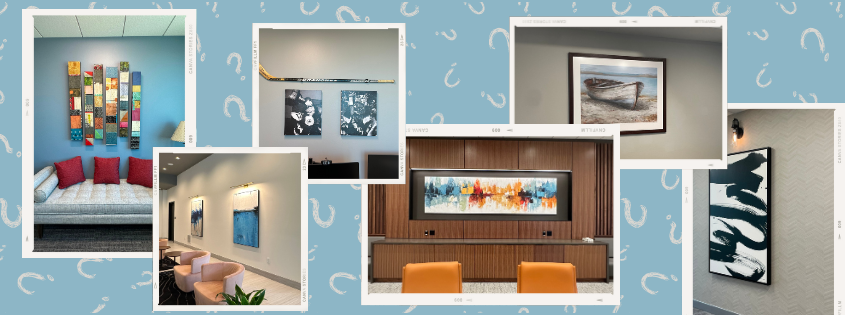Acquiring new art, whether it’s a custom piece sourced by Concepts in Art, or a timeless work crafted with your
toddler’s finest crayons, is an incredibly exciting time. But there’s a lot that goes into ensuring the life of your
new investment is long, so professional art consultant Jenny Gaffney has outlined a few tips and tricks that will keep your art looking like new.
1) Proper handling
Handling art with clean hands is crucial to avoid transferring oils, dirt, and fingerprints onto the surface; for
more delicate pieces, you might want to consider wearing cotton gloves. If you don’t want to invest in gloves,
throwing a blanket or towel over the piece may work fine. Additionally, whenever you’re moving art, always
support the piece from the underneath rather than lifting it by the frame or edges. Lifting from the bottom
almost guarantees the work won’t slip out of your grip and minimizes any damage the pressure from your fingers
may cause.
2) Appropriate display
The location where you display your art can significantly impact its longevity. Of course, if you’re working with
a professional art installer like Concepts in Art, this will be handled, but if you’re riding solo there are a few
things to keep in mind. Avoid hanging art in direct sunlight, as UV rays can cause colors to fade over time.
Instead, choose a spot with indirect light and consider using UV-protective glass or acrylic when framing to
minimize exposure. Also, keep art away from heat sources like radiators or fireplaces, which can cause warping
and other damage due to temperature fluctuations.
3) Controlled environment
Speaking of temperature fluctuation, it’s important to choose a room that has very few, if any, large temperature
swings. Maintaining a stable environment is key to preserving art, so aim for a consistent temperature (between
65-75°F or 18-24°C) and humidity level (between 40-50%). Excessive humidity can lead to mold growth, while
low humidity can cause materials to dry out and become brittle, so employ humidifiers or dehumidifiers as
needed to maintain an optimal environment.
4) Light cleaning
Dust and dirt can accumulate on art over time, so regular – but light handed – cleaning is necessary. For framed
paintings and sculptures, use a soft, dry microfiber cloth to gently remove any dust. Always avoid using
cleaning agents or water directly on the artwork, as the chemicals can cause irreversible damage. For
unframed or delicate pieces, consult a professional conservator for cleaning advice.
Installing new art is exciting, but there are several best practices new owners should use in order to protect its
integrity. If you’re unsure, be sure to reach out to Concepts in Art or another professional service for advice.




